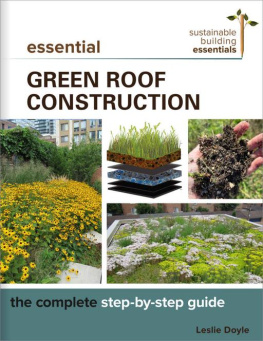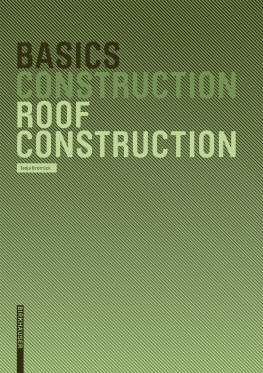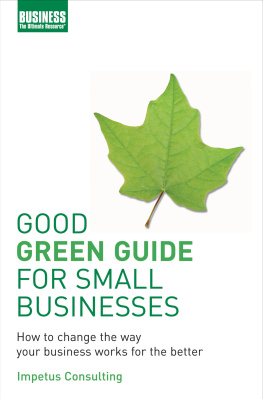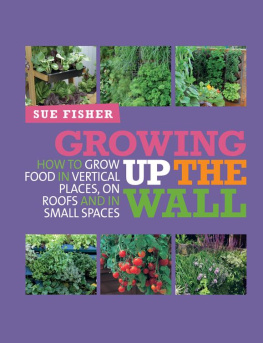SMALL GREEN ROOFS

SMALL GREEN ROOFS
Low-Tech Options for Greener Living
Nigel Dunnett
Dusty Gedge
John Little
Edmund C. Snodgrass

Frontispiece: Converting a shipping container into a small building is one means of ensuring that there is enough structural support for a green roof. This building at Cove Park in Scotland is part of an artists community. Photo by Cove Park
Thanks are offered to those who granted permission for use of materials but who are not named individually in the acknowledgments. While every reasonable effort has been made to contact copyright holders and secure permission for all materials reproduced in this work, we offer apologies for any instances in which this was not possible and for any inadvertent omissions.
Copyright 2011 by Nigel Dunnett, Dusty Gedge, John Little, and Edmund C. Snodgrass. All rights reserved.
Published in 2011 by Timber Press, Inc.
The Haseltine Building 2 The Quadrant
133 S.W. Second Avenue, Suite 450 135 Salusbury Road
Portland, Oregon 97204-3527 London NW6 6RJ
www.timberpress.com www.timberpress.co.uk
Printed in China
Library of Congress Cataloging-in-Publication Data
Small green roofs: low-tech options for greener living/Nigel Dunnett... [et al.].1st ed.
p. cm.
Includes bibliographical references and index.
ISBN-13: 978-160469-059-0
1. Green roofs (Gardening) I. Dunnett, Nigel.
SB419.5.s63 2011
635.9671dc22 2010041465
A catalogue record for this book is also available from the British Library.
To my wife, Marta Herrero,
for her love, care, and support,
and my two boys,
Alex and Jackthis is for you
Nigel Dunnett
To Dr. G. Kadas,
for her long-standing commitment,
research, and support
for green roofs and biodiversity
Dusty Gedge
To my wife, Fi,
and our kids, Sam and Poppy,
for keeping me sane;
to my brother, Rob,
for going along with the idea;
and friends Dave, Paul, Andy, and Kelvin
for listening to me in the pub
every Friday night
John Little
To Thomas Snodgrass,
farmer, inventor, and
a real Do It Yourself mentor
Ed Snodgrass
CONTENTS



INTRODUCTION

The green roof on top of this house at Riomaggiore, Italy, fits nicely with the local landscape. It provides additional recreational space and habitat for birds and invertebrates, captures rainwater, and keeps the building cool beneath. Photo by Emilio Ancaya, Living Roofs, Inc.
GREEN ROOFS have captured peoples imagination the world over. In North America, Europe, China, Southeast Asia, Australia, and New Zealand green roofs have surged in popularity because they just seem rightright because of the way they look and because of the many benefits they bring to a buildings users and owners, to the people who see the building, and to the wider surroundings that the building sits within. This sense of the inherent goodness of putting plants and nature back into the hard and stark environments of our towns and cities touches something deep within us. It cuts to the very heart of our well-being as individuals and of human society as a whole.
Greening a roof, however small, is therefore a profound act, full of meaning and symbolism. The act of greening a building or structure, whether it is retrofitted onto an existing structure or included as an element in the design of a new building, makes a deep statement about the way we see the world. Green roofs get under the skin. They become fascinating living and dynamic objects, and having or making a green roof can be life-changing. The pioneering and visionary Austrian artist and designer Friedensreich Hundertwasser, who created several notable buildings with expansive gardens and forests on their roofs, put it this way (quoted at www.gardenvisit.com ):
The true proportions in this world are the views to the stars and the views down to the surface of the earth. Grass and vegetation in the city should grow on all horizontal spacesthat is to say, wherever rain and snow falls vegetation should grow, on the roads and on the roofs. The horizontal is the domain of nature and wherever vegetation grows on the horizontal level man is off limits. Ive worked a great deal with grass roofs, putting soil on top and having things grow, but there is something strange in this, more than ecological. It is a religious act to have soil on your roof and trees growing on top of you; the act reconciles you with naturea very ancient wisdom.

Even the smallest of spaces are suitable for greening. Here a green roof for wildlife is installed on an apartment balcony. Photo by Dusty Gedge
Of course, for most of us who may wish to put a green roof on a garage or on a small building in the garden, this may seem very idealistic, rather far-fetched, and completely outside of the reasoning behind our decision to have a green roof structure. Maybe you want to improve an ugly view, encourage wildlife, keep a building cool in summer, or soak up excess rainfall runoff from the roof. Nevertheless, it is worth reminding yourself that what you are doing is also very powerful and a deliberate and positive act to make a difference. It is life-enhancing and will do you good, as a person, as well as doing good for the wider environment. Heres another quote, this time from Professor Stephen Kellert (in the spring 2009 issue of Living Architecture Monitor), who has popularized biophilic design, a field of environmental design that makes a direct link between the need to integrate buildings and nature:
Some green roofs represent extraordinary insertions of living nature into the built environment, distinguished by their ecological value, experiential benefits, beauty and capacity to raise human comfort and satisfaction. On the other hand, some green roofs are almost totally focused on environmental impact objectives independent of human experience, emphasizing, for example, almost entirely such objectives as stormwater retention and enhanced insulation, with zero to little positive human contact with nature. In my opinion, the best green roof designs are ones that combine both environmental and human aesthetic objectives... and these will, I predict, ultimately be the most sustainable.
It is with small and domestic green roofs that we have a greater opportunity to achieve this objective than anywhere else because there will usually be a higher degree of ownership and care compared with the more familiar larger commercial and corporate green roofs. In writing this book, we hope to encourage as many people as possible to have a go at initiating, installing, constructing, and planting a green roof, whether it be in their own homes or gardens, as part of a community initiative, or at their place of work or recreationanywhere there is an opportunity to bring nature back to a place where it had been previously banished. In so doing we, of course, wish to increase the total number of green roofs that we have around us, for the benefit of all. But more than that, we wish to encourage meaningful green roofsgreen roofs that have a story to themas well as individualistic green roofsgreen roofs with personality. If there is one message to come out of this book, it is that making a green roof does not have to be a mysterious or complicated matter, nor does it need to be expensive. Most structures or surfaces open themselves to some sort of greening.














